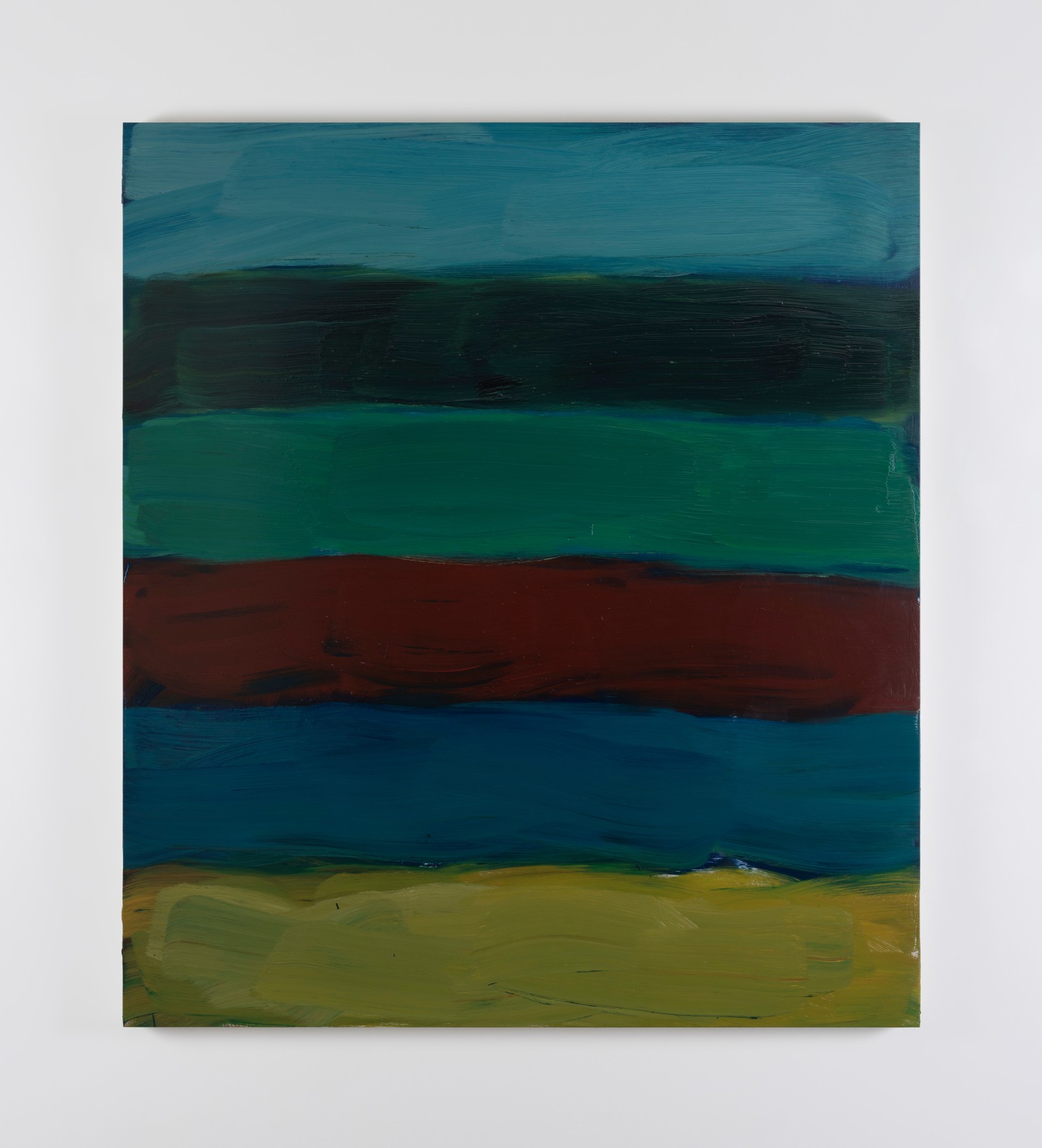like the light at the beginning of the world

Nathalie Du Pasquier • Aleana Egan • Siobhán Hapaska • Jaki Irvine • Merlin James • Elizabeth Magill • Brian Maguire • William McKeown • Isabel Nolan • Sean Scully • Paul Winstanley • Zhou Li
Describing a primordial and impossible emanation of light, Like the light at the beginning of the world brings together artworks by twelve artists.
Sean Scully’s 5 x 4 foot painting on aluminium Landline Green Yellow gives expression to the meeting of land, sea and sky. Six bands of deep colour agitate against one another, distilling the landscape to its most elemental forms through vigorous brushstrokes and undulating colour. Zhou Li’s 2 x 3 meter painting Landscape of nowhere: Water and dreams No.11 offers a rich and dazzling study of light reflected on the surface of water. Going deeper than optical sensation, Zhou’s painting uses water as a vehicle for introspection and reflection. In the artist’s words, ‘only when piercing the spiritual depth of water can we better understand ourselves’. In another study of water and light, moonlight illuminates a coastal scene in Merlin James’s painting No title (seascape), casting a white glow onto the otherwise desolate brown sands, and flickering on the surface of coarse, choppy waters.
Light and memory suffuse the landscape in Elizabeth Magill’s I searched for form and land. A row of conifers flanks a view into a blue mountain pass in the distance, while errant squiggles and acid-yellow orbs distort the scenic vista and hint at the fallibility of memory. The painting takes its title from David Bowie’s ominous and mournful ballad ‘The Man Who Sold The World’. A group of four archaeologists are huddled underground – perhaps exploring some neolithic burial mound – in Isabel Nolan’s painting Dead talk (archaeologists). Sunlight bleeds into a vivid pink sky as the subterranean and skull-headed archaeologists gather beneath a Celtic spiral, long seen as a symbol of life cycles and renewal. Untitled by William McKeown captures the openness of the sky, capturing the feeling of our emergence into light and reminding us of our proximity to the infinite.
Spatial experience is flattened, opened up and rendered anew in Nathalie Du Pasquier’s In cortile (or In courtyard). Architectural forms are reduced to simple geometries that float in space, expressing their latent communicative spirit through the interaction of colour and space. Aleana Egan engenders psychological states through enigmatic arrangements of objects and forms – capturing preverbal shapes as they form fleetingly behind our eyelids, or the liquid forms of memories as they recede from the grasp of consciousness. Suggestive rather than representative, they capture atmospheric shifts that feel open-ended, in a state of flux. Sound and image become co-existing embryonic forces in a new installation by Jaki Irvine. A murmuring heart-like form is adrift on the surface of mysterious waters, its glowing red ember floating in a primordial soup, its pulsations generating an ambient and ethereal soundscape.
Finally, light can take on a form of warning, impending disaster, but also of salvation. A glowing red sanctuary lamp reflects our seemingly constant state of emergency and alarm in Siobhán Hapaska’s sculpture Earthed, a flashing red light and coiling silver cable suspended from the ceiling. In Paul Winstanley’s Interior with a Large Window (Yantra), light streams through the stained glass window of a Modernist church interior. For this imaginary structure, Winstanley looks towards post-war architecture in cities like Hamburg, where wartorn buildings are rebuilt in a style associated with renewal. Brian Maguire has long turned his attention to social justice, and his large painting in this exhibition depicts a soup kitchen in Portland, Oregon. With figures populating the composition across a left-right axis, and light emanating from two central figures in hi-vis vests, the painting has echoes of The Last Supper – finding solace and redemption in the sharing of food.
South Anne Street, Dublin 2
Monday 10:00 - 17:45
Tuesday 10:00 - 17:45
Wednesday 10:00 - 17:45
Thursday 10:00 - 17:45
Friday 10:00 - 17:45
Saturday 11:00 - 16:30
